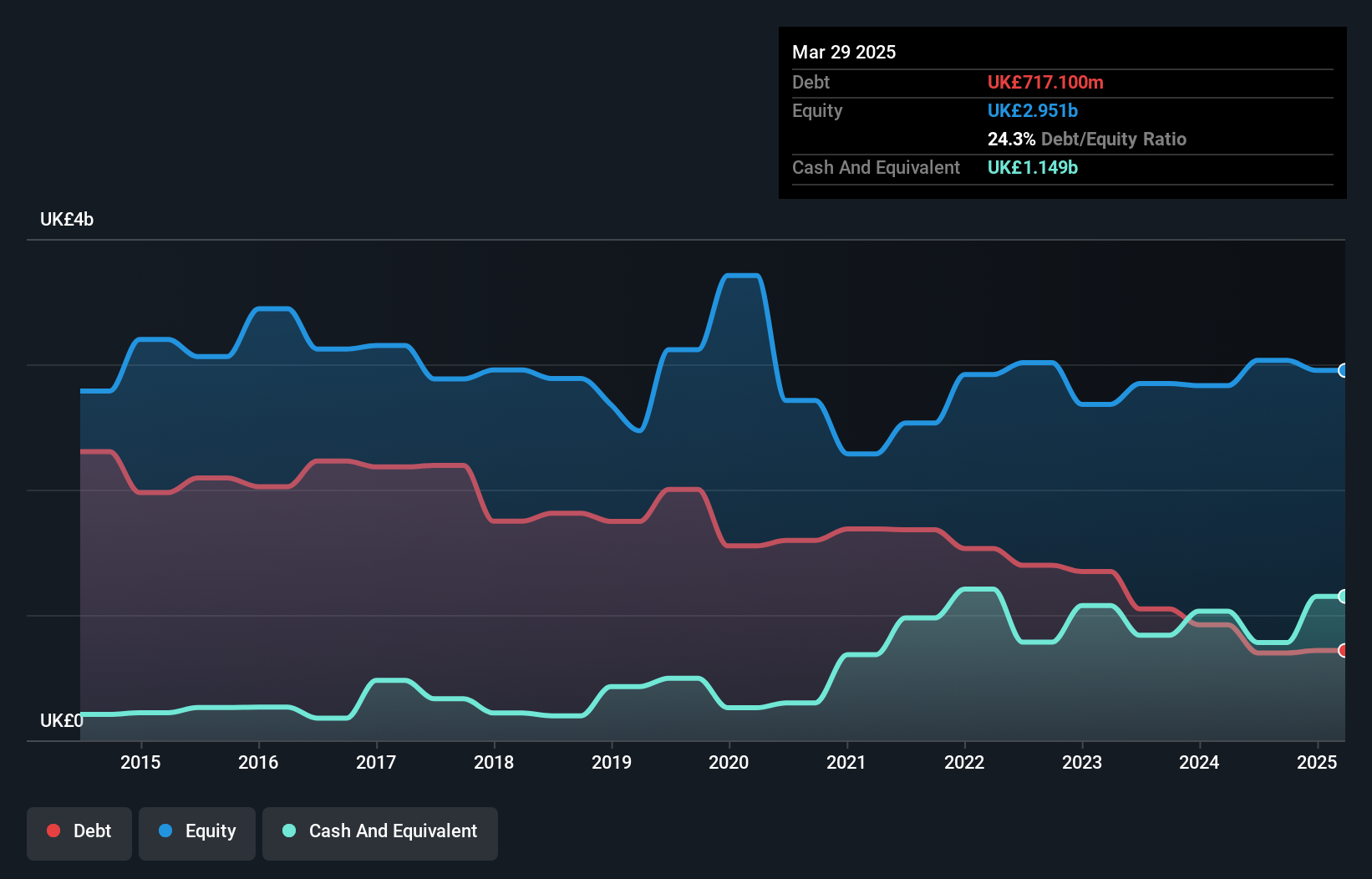Marks and Spencer Group (LON:MKS) Has A Pretty Healthy Balance Sheet
Howard Marks put it nicely when he said that, rather than worrying about share price volatility, 'The possibility of permanent loss is the risk I worry about... and every practical investor I know worries about.' It's only natural to consider a company's balance sheet when you examine how risky it is, since debt is often involved when a business collapses. We can see that Marks and Spencer Group plc (LON:MKS) does use debt in its business. But the more important question is: how much risk is that debt creating?
When Is Debt A Problem?
Debt and other liabilities become risky for a business when it cannot easily fulfill those obligations, either with free cash flow or by raising capital at an attractive price. Ultimately, if the company can't fulfill its legal obligations to repay debt, shareholders could walk away with nothing. However, a more usual (but still expensive) situation is where a company must dilute shareholders at a cheap share price simply to get debt under control. Of course, the upside of debt is that it often represents cheap capital, especially when it replaces dilution in a company with the ability to reinvest at high rates of return. The first thing to do when considering how much debt a business uses is to look at its cash and debt together.
What Is Marks and Spencer Group's Net Debt?
You can click the graphic below for the historical numbers, but it shows that Marks and Spencer Group had UK£717.1m of debt in March 2025, down from UK£921.7m, one year before. But it also has UK£1.15b in cash to offset that, meaning it has UK£431.6m net cash.

A Look At Marks and Spencer Group's Liabilities
We can see from the most recent balance sheet that Marks and Spencer Group had liabilities of UK£2.78b falling due within a year, and liabilities of UK£3.09b due beyond that. On the other hand, it had cash of UK£1.15b and UK£271.5m worth of receivables due within a year. So its liabilities outweigh the sum of its cash and (near-term) receivables by UK£4.45b.
This deficit is considerable relative to its market capitalization of UK£7.38b, so it does suggest shareholders should keep an eye on Marks and Spencer Group's use of debt. Should its lenders demand that it shore up the balance sheet, shareholders would likely face severe dilution. Despite its noteworthy liabilities, Marks and Spencer Group boasts net cash, so it's fair to say it does not have a heavy debt load!
Check out our latest analysis for Marks and Spencer Group
And we also note warmly that Marks and Spencer Group grew its EBIT by 17% last year, making its debt load easier to handle. The balance sheet is clearly the area to focus on when you are analysing debt. But it is future earnings, more than anything, that will determine Marks and Spencer Group's ability to maintain a healthy balance sheet going forward. So if you want to see what the professionals think, you might find this free report on analyst profit forecasts to be interesting.
Finally, a business needs free cash flow to pay off debt; accounting profits just don't cut it. Marks and Spencer Group may have net cash on the balance sheet, but it is still interesting to look at how well the business converts its earnings before interest and tax (EBIT) to free cash flow, because that will influence both its need for, and its capacity to manage debt. During the last three years, Marks and Spencer Group generated free cash flow amounting to a very robust 85% of its EBIT, more than we'd expect. That puts it in a very strong position to pay down debt.
Summing Up
While Marks and Spencer Group does have more liabilities than liquid assets, it also has net cash of UK£431.6m. And it impressed us with free cash flow of UK£806m, being 85% of its EBIT. So is Marks and Spencer Group's debt a risk? It doesn't seem so to us. When analysing debt levels, the balance sheet is the obvious place to start. However, not all investment risk resides within the balance sheet - far from it. For example - Marks and Spencer Group has 2 warning signs we think you should be aware of.
Of course, if you're the type of investor who prefers buying stocks without the burden of debt, then don't hesitate to discover our exclusive list of net cash growth stocks, today.
New: Manage All Your Stock Portfolios in One Place
We've created the ultimate portfolio companion for stock investors, and it's free.
• Connect an unlimited number of Portfolios and see your total in one currency
• Be alerted to new Warning Signs or Risks via email or mobile
• Track the Fair Value of your stocks
Have feedback on this article? Concerned about the content? Get in touch with us directly. Alternatively, email editorial-team (at) simplywallst.com.
This article by Simply Wall St is general in nature. We provide commentary based on historical data and analyst forecasts only using an unbiased methodology and our articles are not intended to be financial advice. It does not constitute a recommendation to buy or sell any stock, and does not take account of your objectives, or your financial situation. We aim to bring you long-term focused analysis driven by fundamental data. Note that our analysis may not factor in the latest price-sensitive company announcements or qualitative material. Simply Wall St has no position in any stocks mentioned.
About LSE:MKS
Undervalued with adequate balance sheet.
Similar Companies
Market Insights
Community Narratives



